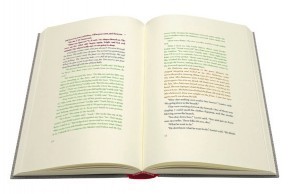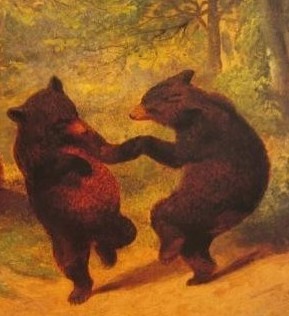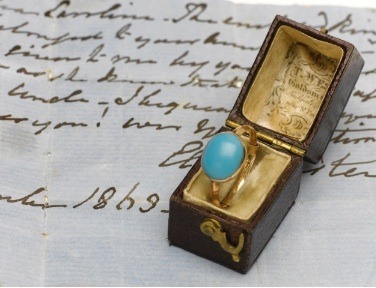The Paris Review's Blog, page 902
July 9, 2012
Home to Darkness: An Interview with Playwright Tom Murphy
Sit in a theater for a Tom Murphy play and I can guarantee you one thing: you will come out of that theater rattled, and throttled, and staggered, in the best of all possible ways. It might take a long moment, afterwards, to catch your breath; use that moment to listen to the torrent of marvelous language that will still be surging through your head. That tussle of starkness and poetry. Murphy doesn’t give us lyricism the way that Irish writers, apparently, are meant to do; he gives us blunt and beautiful rhythm. He doesn’t give us laughter in that way either, though audiences will inevitably seek it out, and connect, in the sting of that laughter falling wrongly, with the defiantly dark intelligence of Murphy’s vision: guffaw at all the drinking scenes, if you will, but these are broken lives, and there’s no joking that away.
Tom Murphy is Ireland’s greatest living dramatist. We say things like that in Ireland—Ireland’s greatest this, Ireland’s greatest that—as though it means anything in the greater scheme of things. Who cares what Ireland thinks is great? Tom Murphy doesn’t. But it’s true of him, that accolade, I promise you. Read More »
Watch: How a Book Is Made, 1947
You already know how The Paris Review is made. But how about a book? Find out, 1947-style! We must say, despite the labor-intensive type-setting process, they make the publishing process look easy, 2012-style!
Thanks, Page Views, for the tip!
Reading Dogs, Biblical Judges, Myers-Briggs
Dogs reading books.
Continuing the judicial book-report trend, a South Carolina woman is granted a reduced sentence on the condition she read and report on the Book of Job. She’s on it.
Archival audio of a 1972 panel discussion from the 92nd St. Y titled “Women Writers: Has Anything Changed?” featuring Nora Ephron, Elizabeth Janeway, and Carolyn Kizer, moderated by Helen Vendler.
Batman dominates the best-seller list (as well as the future box office.)
Data: singular or plural? The debate rages on.
In case you ever wondered about Anne Shirley’s Myers-Briggs personality type.
July 6, 2012
Binyavanga Wainaina, Nairobi, Kenya
A series on what writers from around the world see from their windows.
I have lived in this cramped little cottage near Ngong Forest in Nairobi for the past year. After many winters abroad, I find myself unable to work indoors. Nairobi gets very cold in June and July, but I like to work free of the prison of the house. I love the tingling pullover of night sounds and forest sounds and the bite of cold breeze and distant cars and stereos. Sometimes I close my eyes and sway my arms into patterns to move with the sensations of the strong bitpieces banging about in my temples. The bitpieces are almost always word-based moods. They live and die fast. When the bitpieces catch characters or a probable course of narrative action, my fingers start to keyboard peddle furiously. If I stop, the whole world crumbles. If the bitpiece world crumbles, I stop. Days, sometimes bad-mood weeks can go by before momentum is found again. Tennis helps. And fermented millet porridge. And my lover. —Binyavanga Wainaina
What We’re Loving: Underwater Art, Analytic Philosophy, Betsy-Tacy
Two Paris Review editors in one New York Times magazine? That’s what I call a week in culture: Sadie Stein on Baby Bjorns and J. J. Sullivan on Faulkner. —Lorin Stein
Like Jim Holt, I am convinced that some analytic philosophy is worth reading and rereading. If only one book could make the case, though, it would have to be Derek Parfit’s work of moral philosophy, Reasons and Persons. Almost thirty years old, it endures through a combination of novel thought and unimpeachable style. And, unlike much analytic philosophical writing, Parfit’s words have a vigorous sense of purpose, a compassion and focus reminiscent of Simone Weil and George Orwell. Favorite sections include teletransportation, indistinct selves, the repugnant conclusion, and the opening sentence: “Like my cat, I often simply do what I want to do.” —Tyler Bourgeois
I am continually captivated by the underwater art of “eco-sculptor” Jason deCaires Taylor—or, rather, what happens to it. Taylor submerges his work—predominantly human figures—in the waters of the West Indies and in the Gulf of Mexico. Over time, the permanent installations come to act as artificial reefs, attracting corals, aggregating fish species, and increasing marine biomass. Most of Taylor’s figures stand with their faces upturned to the surface, their eyes closed, as they are silently and arrestingly overtaken by algae, sponges, and hydrozoans. The overall impression is one of indomitable spirit within metamorphosis: creatures coming to life. —Anna Hadfield
Faulkner, Munro, and Bribery!
A color-coded Sound and the Fury, just as Faulkner intended.
Are girly themes having a moment?
A beginner’s guide to Alice Munro.
In defense of cursive.
Oxford University Press is fined for bribery.
July 5, 2012
TPR Softball: Failure’s No Success at All
Somewhere a Hadada quietly weeps.
It’s been a rough two weeks on the diamond for The Paris Review, culminating in an extra-inning loss to a venerable (cough) Harper’s side—a loss that had the ghost of George Plimpton clucking in disapproval. As the calendar flips to July and a once promising season slowly turns to shit, it has become apparent that we are simply not to be trusted. The talent is there, but it’s mercurial, slave to whim and whimsy. As a team we’ve adapted an identity that is generously enigmatic: although capable of lighting up any softball scoreboard in greater Manhattan, lately it seems that we are just trying to get our jerseys on.
On Uncle Vanya: Part Three
But the reason I was telling this story was because I was reminded of that night in St. Petersburg when I saw Annie Baker’s adaptation of Uncle Vanya. Like Vanya and Astrov, I am middle-aged, a drunk, often despondent—perhaps I am having a midlife crisis—and yes, I am an adulterer. (Vanya and Astrov are only would-be adulterers.) At the time I was trying to pick up this Russian waitress—sitting drunk in the snow-covered park, watching a bear dance at the end of a short rope—I was already an adulterer. Two years before, I had left my first wife for my assistant, who worked in my jewelry store. I drank my way into that affair, and I would drink my way through the divorce.
But the sad fact was I did not get to sleep with the Russian waitress. This is what actually happened.
The man with the bear would not leave me alone. Read More »
Austen’s Ring, Hemingway’s Endings
A turquoise ring that once belonged to Jane Austen is on the block at Sotheby’s, accompanied by a note from Eleanor Austen to her daughter.
Bookstores with cafés sell more reading material, figures suggest.
Two more New York City bookstores, Washington Heights’s Word Up and Harlem’s Hue-Man, face closure. (The latter will continue as an online store.)
Poet Simon Armitage crossed the Pennine Way as a modern troubadour, exchanging only verse for food and shelter.
A new edition of A Farewell to Arms will contain Hemingway’s thirty-plus alternate endings.
Celebrating Pie Week.
July 3, 2012
A League of Their Own
The local Junior League cookbook is the culinary bible of the Southern home. Every kitchen of my Alabama childhood had at least one well-worn copy of Magic, the Junior League of Birmingham’s 1983 recipe collection, with an enticing yellow-spiral binding and entries on everything from shrimp salad to banana pudding. Some would also have a copy of Palates, Platters, and Other Such Matters, the JLB’s 1950 edition, notable for its more liberal inclusion of lard and mayonnaise. Like every Junior League cookbook, the recipes were sourced from the community and thus varied wildly both in quality and in method of preparation. Still, the hand-me-down wisdom from Birmingham’s residents on how to properly prepare venison skewers or pimiento-cheese eggs had an authority that no celebrity chef or French instructor could muster. They were part of the trusted pantheon that my parents, whose taste ran more to grilled fish and apple pies than deep-fried catfish and layer cakes, would consult whenever a dish needed some extra flair. When I moved up to New York for college, my mother bequeathed me the most useful items she could think of for the journey: a ceramic teapot, a CD of Thin Lizzy’s greatest hits, and a copy of the newest JLB cookbook, Food for Thought.
It was part homesickness, part tiring of the endless meal-plan tuna melts that caused me to leaf through Food for Thought for more than just the pictures and familiar contributor names. (In scanning the index of recipes, certain contributors jumped out: the mother of a junior high crush, the organizer of the reception of my first and only debutante event, the family for whom my high school auditorium was named.) Sandwiched between essays waxing nostalgic about grits and poking fun at California cuisine were the dishes that taught me how to cook in earnest. After teenage years full of longing for escape from my muggy Southern home, I began, in my little dorm on 116th Street, clumsily making vats of overly spiced gumbo and punch bowls of mint juleps for my bewildered but grateful roommates. Read More »
The Paris Review's Blog
- The Paris Review's profile
- 305 followers












